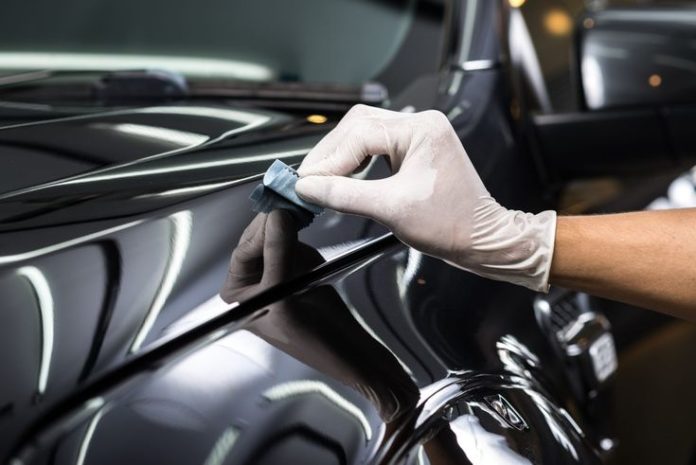One of the most common questions car owners ask about ceramic coatings is: “How long does it really last?” While the marketing often promises years of protection, the actual lifespan of a ceramic coating is not a fixed number. It’s influenced by a complex interplay of factors, ranging from the quality of the product itself to your daily driving habits and maintenance routine.
Generally, you can expect a professionally applied ceramic coating to last anywhere from 2 to 5 years. Some premium professional-grade coatings might offer guarantees or claim lifespans of 5-7 years, or even up to 10 years, under ideal conditions and with strict adherence to maintenance schedules. Consumer-grade or DIY ceramic coatings, on the other hand, typically last from 6 months to 2 years.
Let’s break down the key factors that determine how long Ceramic coating service will truly endure:
1. Quality of the Ceramic Coating Product
- Higher SiO2 Content: Professional-grade ceramic coatings often contain a higher concentration of silicon dioxide (SiO2), which is the primary ingredient responsible for the coating’s hardness, durability, and hydrophobic properties. More advanced formulations create a stronger, thicker, and more resilient bond with the paint.
- Layering: Some professional applications involve multiple layers of ceramic coating, which increases the thickness and overall durability of the protective barrier.
- Brand Reputation: Established brands in the detailing industry often invest heavily in research and development, resulting in more robust and long-lasting formulations.
2. Quality of Application
This is arguably the most critical factor influencing longevity. A ceramic coating is only as good as its application.
- Thorough Paint Preparation: Before application, the car’s paint must be meticulously cleaned, decontaminated (e.g., clay bar treatment), and often polished to remove any swirl marks, scratches, or imperfections. Any dirt, wax, or imperfections left on the surface will prevent the coating from bonding properly, leading to premature failure.
- Proper Application Technique: Even and precise application by a skilled detailer is essential to ensure uniform coverage and avoid high spots or streaks.
- Curing Process: Ceramic coatings require a specific curing time (often 24-48 hours, sometimes longer) during which they chemically bond and harden. Skipping this step or exposing the car to water or contaminants during curing will significantly compromise the coating’s durability. Professionals have controlled environments for optimal curing.
3. Environmental Conditions
Where and how your car spends its time significantly impacts the coating’s lifespan.
- UV Exposure: Prolonged exposure to intense sunlight and harmful UV rays can gradually degrade ceramic coatings over time, leading to a loss of hydrophobic properties and dullness. Parking in shaded areas or garaging your car helps immensely.
- Climate Extremes: Frequent exposure to extreme temperatures (intense heat or freezing cold) can stress the coating.
- Pollution and Contaminants: Areas with high industrial fallout, acid rain, bird droppings, tree sap, and road salt (in regions where applicable) will accelerate the wear and tear on the coating. The more contaminants the coating battles, the faster it may degrade.
- Road Debris: Frequent highway driving or driving on unpaved roads exposes the car to more road grit, stones, and bugs, which can cause micro-abrasions and wear down the coating.
4. Maintenance Routine and Care
Even the best ceramic coating requires ongoing maintenance.
- Washing Frequency: Regular washing is crucial to remove dirt, grime, and contaminants that, if left on the surface, can eventually compromise the coating.
- Washing Technique:
- pH-Neutral Shampoos: Only use pH-neutral car shampoos specifically designed for ceramic-coated vehicles. Harsh, high-alkaline, or acidic cleaners can strip or damage the coating.
- Hand Washing: Avoid automatic car washes with harsh brushes, as they can abrade the coating and cause swirl marks. Hand washing with soft microfiber mitts is recommended.
- Proper Drying: Always dry the car with clean, soft microfiber towels to prevent water spots, which are mineral deposits that can etch into the coating if left to dry.
- Avoid Harsh Chemicals: Steer clear of aggressive cleaners, tar removers, or bug removers that are not explicitly safe for ceramic coatings.
- Use Ceramic Boosters/Toppers: Many ceramic coating manufacturers offer “booster” or “maintenance spray” products that can be applied every few months. These products replenish the hydrophobic properties, enhance gloss, and add a thin sacrificial layer, thereby extending the life of the primary coating.
- Annual Inspections: Some professional detailers recommend annual inspections and maintenance coats to ensure the coating is performing optimally and to address any areas showing signs of wear.
Signs Your Ceramic Coating May Be Wearing Off:
- Reduced Water Beading/Sheeting: The most obvious sign. If water no longer beads up tightly and rolls off effortlessly, the hydrophobic properties are diminishing.
- Loss of Slickness: The surface will feel less slick and smooth to the touch.
- Increased Dirt Adhesion: Your car will start getting dirtier faster and be harder to clean.
- Dullness: The deep gloss and shine might start to diminish.
The Bottom Line
While a ceramic coating offers unparalleled long-term protection compared to traditional waxes, its actual lifespan is a variable, not a guarantee. To maximize the longevity of your ceramic coating, invest in a high-quality product (preferably professionally applied), ensure meticulous paint preparation, and commit to a consistent and proper maintenance routine. By doing so, you can enjoy the benefits of your ceramic coating for several years, keeping your car looking its best.









